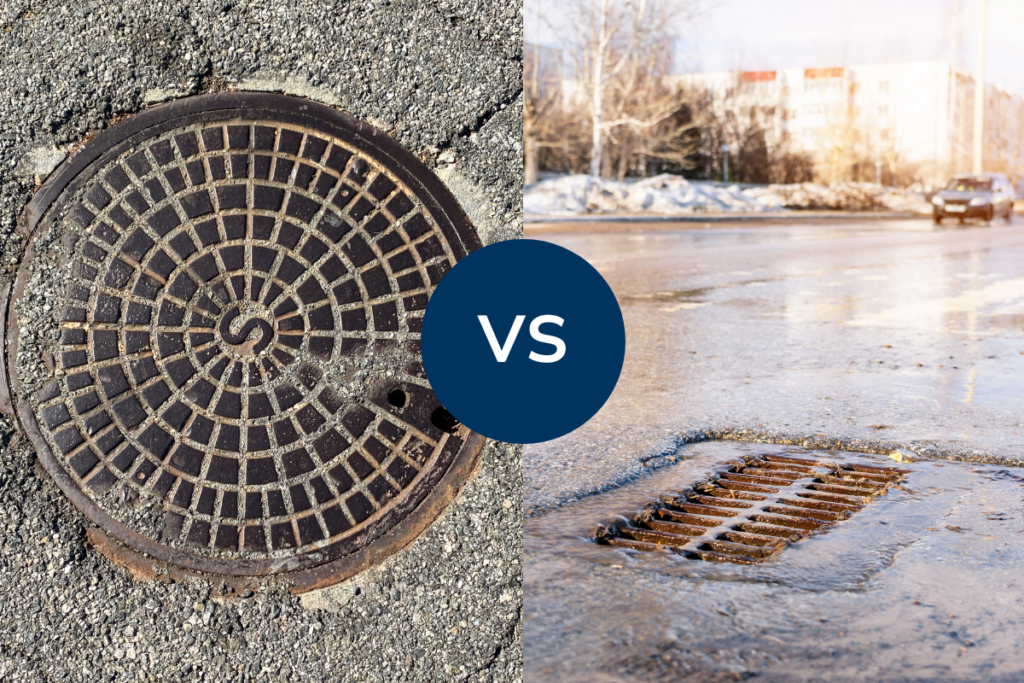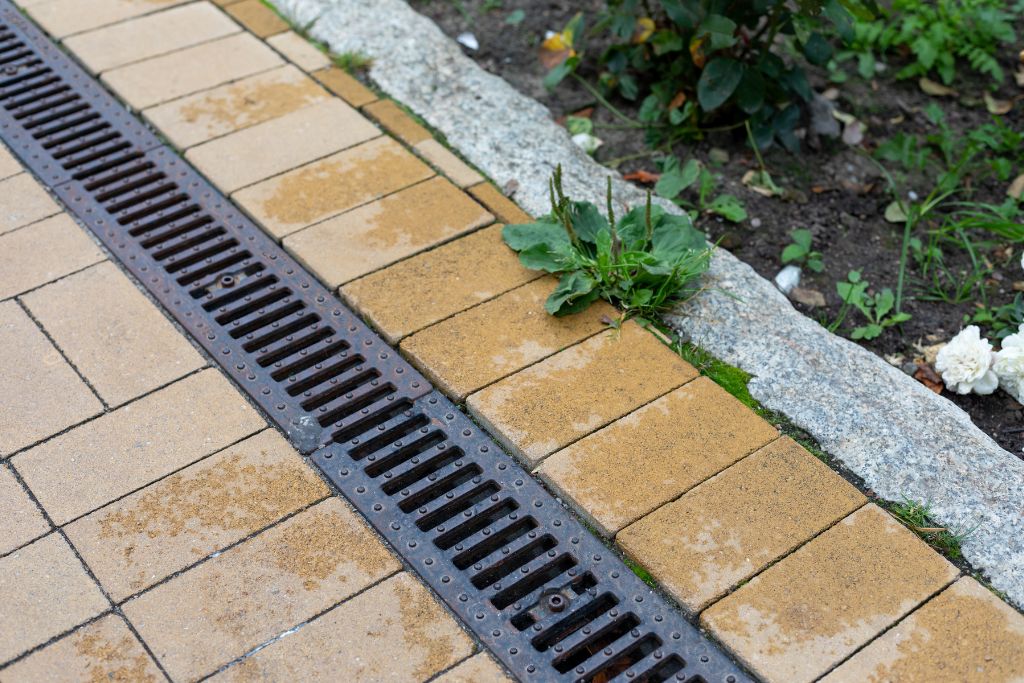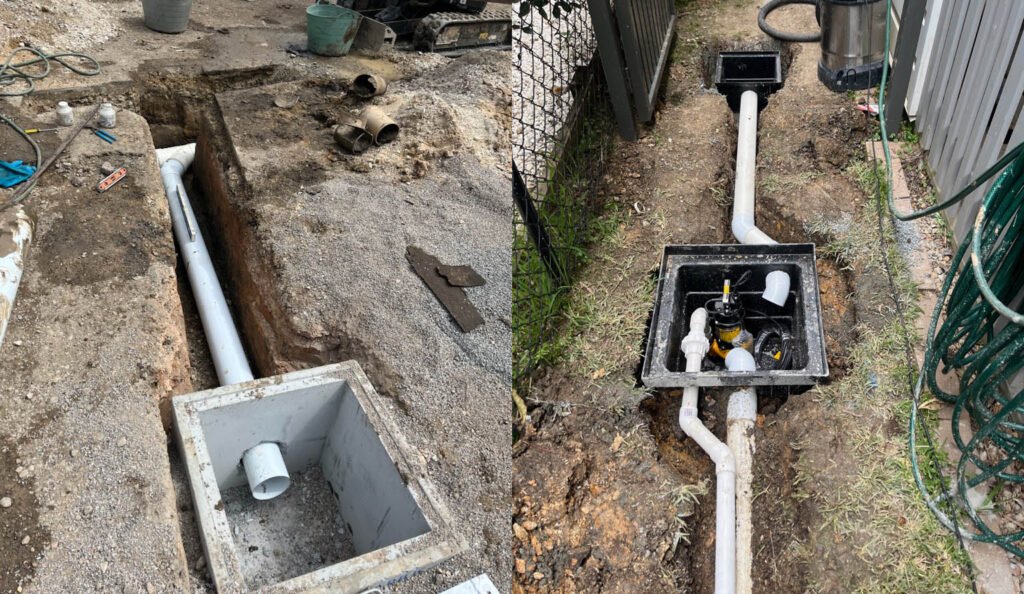Drainage – don’t be shy to admit that you hardly ever think about it, because you’re definitely not alone. But you definitely think about it when something goes horribly wrong. A clogged sewer line, a blocked storm drain, a backed-up toilet, a flooded backyard. All of them turn a good day into a soggy nightmare.
But while your headache may be the same, not all drainage is the same. Sewer and stormwater systems might sound similar, but they’re built for very different jobs. So, what’s the difference, exactly?
Here’s a breakdown from our Gold Coast drain plumbers and Tweed Heads blocked drain experts – in 8 bite-sized pieces that will leave a homeowner just like you smarter than the average about what’s happening beneath their feet:
1. The purpose
Hint: One’s for waste, the other’s for rain.
At its core, the difference between sewer and stormwater drainage comes down to what they’re handling.
Sewer drainage is all about whisking away the dirty stuff – the toilet flushes, the sink water – anything else that goes down the drain inside a home.
It’s the sewer line’s job to carry that waste to treatment plants where it’s cleaned up before being released.
Think of stormwater drainage, on the other hand, as nature’s cleanup crew. That storm drain is there to collect rainwater from roofs, driveways, and streets, keeping it from pooling up where it’s not wanted.
So it’s two systems, with two separate missions:
- One for the human mess
- The other for Mother Nature’s leftovers.
2. The source
Hint: Where the water comes from really matters.
So, you’ve just finished washing the dishes, and that soapy water’s swirling down the kitchen sink. It’s destined for the sewage drain.
Sewer systems deal with water that’s been used indoors – everything from showers to laundry.
Now imagine a downpour soaking the Gold Coast, with water rushing off patios and pavements. That’s stormwater – and it’s collected from outside surfaces, not household pipes.
The source is the big divider in the sewer vs drainage confusion:
- One is from daily life indoors
- The other is from the weather outdoors.
3. The destination
Hint: It’s about treatment vs. nature.
Where the water ends up is another big clue.
Sewer drains send their contents – often called sewage drainage – off to a treatment facility. There, it’s filtered, cleaned, and made safe before it’s allowed back into rivers or the ocean.
Stormwater is a different story. Most of it flows into local creeks, rivers, or the sea without a pit stop for treatment. That’s why a blocked storm drain can flood a street instead of a bathroom – it’s got no fancy processing plant waiting at the end of the line.
4. The pipes
Hint: Separate systems mean separate paths.
Here’s where it gets more practical. In most modern towns, from the Gold Coast to Tweed Heads and beyond, sewer and stormwater run through completely separate pipes.
The sewer drain network is a closed system, tightly sealed to keep waste contained and odours at bay.
Stormwater pipes, though? They’re often open at points – like grates on the side of the road. Why? Because they’re built to catch runoff fast. Keeping them separate stops sewer overflows from mixing with rainwater, which could turn a rainy day into a health hazard.
5. The blockages
Hint: Different culprits mean different chaos.
Ever wondered why a plumber might groan at one job but not another? Blockages tell the tale.
A blocked sewer can mean grease, hair, or worse backing up into a home – nasty stuff that’s tough to unstick.
Stormwater blockages are more likely to come from leaves, dirt, or debris swept in by a storm.
Think of it like this – one’s a slow, smelly disaster, while the other can flood your yard in minutes. Both, though, are major headaches.
6. The maintenance
Hint: Who’s responsible?
As a homeowner, sewer drains are usually your responsibility – but only up to the property line. Beyond that, the local council or water authority takes over.
Stormwater responsibility is a bit trickier. While councils manage public drains, private property stormwater – like gutters or downpipes – are all up to the homeowner as well.
7. The impact
Hint: Health versus flooding.
A busted sewer system isn’t just inconvenient – it’s a major health risk. Sewage spilling up and out isn’t just a ridiculously-awful mess to clean up, but it can spread bacteria and ruin a home’s day-to-day life – fast!
Stormwater issues, though, are more about property than people. Too much rain with nowhere to go can mean flooded parts of your property and even eroded and destroyed gardens.
So while one is a germ-filled nightmare, the other is a soggy mess – and one that comes with health hazards as well, with all that stagnant water.
8. The upgrades
Hint: Technology makes a difference.
Technology is constantly changing how these systems work, and it’s pretty impressive.
For sewers, things like high-pressure jetting blast through gunk in the sewer drainage network, keeping it flowing.
Stormwater tech is also getting smarter – think HD drain inspection cameras scoping out hidden blockages, or designs that filter runoff before it hits the creek.
Knowledge is power – And dry feet!
From what they carry to where they go, sewer and stormwater systems both have something in common – they keep life ticking along without you noticing at all. That is, until something goes wrong!
Are things getting messy at your place? Headache getting stronger? A quick call to a pro – especially the friendly team at Drain Masters Plumbing – can sort it out with minimal sweat. We’ve got the tools and the know-how to deal with either system – and so much more. Give us a shout today!





